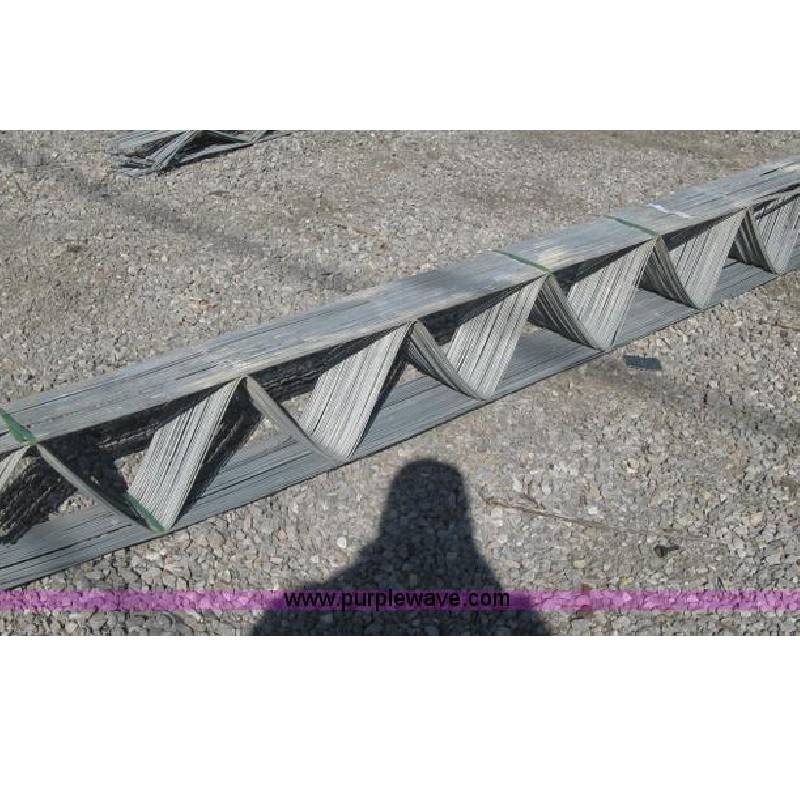
- Mobile Phone
- +8613931874955
- sales@cntcmetal.com
Effective Wall Tie Solutions for 200mm Cavity Construction in Modern Building Projects
An Overview of Wall Ties for 200mm Cavity Walls
In modern construction, the significance of wall ties, especially for cavity walls, cannot be overstated. Wall ties are essential components that provide structural integrity, stability, and support between the two leaves of a cavity wall. In this article, we will delve into the specifics of wall ties used for 200mm cavity walls, exploring their functions, types, installation methods, and important considerations for builders and architects.
What is a Cavity Wall?
A cavity wall consists of two parallel walls or leaves with a gap or cavity in between. This design serves multiple purposes, including insulating the building, allowing moisture to drain away, and adding structural strength. Cavity walls are widely used in regions that experience varying weather conditions, as they help maintain a stable internal environment.
The Role of Wall Ties
Wall ties act as connectors between the two leaves of a cavity wall. They ensure that both leaves work together to withstand wind pressure and other forces that may act on the wall. Additionally, wall ties help to maintain the integrity of the cavity by preventing the two leaves from moving apart. Without wall ties, cavity walls would be susceptible to failure, leading to structural issues over time.
Types of Wall Ties
For a 200mm cavity wall, various types of wall ties can be used, including
1. Mild Steel Wall Ties These are economical and widely used, but they must be galvanized to prevent corrosion, especially in areas exposed to damp conditions.
2. Stainless Steel Wall Ties More expensive but highly durable, stainless steel ties offer excellent resistance to corrosion and are ideal for buildings in coastal areas or high-risk environments.
3. Plastic Wall Ties These are lightweight and resistant to corrosion, making them suitable for specific applications. However, they may not provide the same level of structural support as metal ties.
4. Composite Wall Ties Combining properties of both plastic and metal, composite ties provide good thermal performance while maintaining structural integrity.
Installation Guidelines
wall ties for 200mm cavity

The installation of wall ties in a 200mm cavity wall is a critical process
. Here are the essential guidelines to follow- Spacing Wall ties should be placed at a vertical spacing of no more than 600mm and a horizontal spacing of 900mm. This ensures that the walls are adequately supported.
- Embedding Ties should be embedded into the inner leaf of the wall by a minimum of 75mm. This provides sufficient anchorage and prevents slippage.
- Alignment Wall ties must be aligned correctly to ensure that the forces acting on the wall are evenly distributed. Misalignment can lead to structural weaknesses.
- Vertical Orientation Ties should be installed in a vertical orientation to facilitate drainage and to maintain the cavity’s integrity.
Important Considerations
When selecting and installing wall ties for a 200mm cavity wall, several factors should be taken into account
- Local Building Codes Always adhere to local regulations and building codes regarding wall tie specifications and installation practices.
- Environmental Conditions Consider the local weather conditions and choose wall ties accordingly. Areas with high humidity or salt exposure require corrosion-resistant materials.
- Manufacturer Guidelines Follow the manufacturer’s instructions for installation to ensure optimal performance and warranty compliance.
Conclusion
Wall ties are a critical component of 200mm cavity walls, providing necessary support and stability. Understanding the various types of wall ties, their functions, and the correct installation practices is essential for architects and builders. By adhering to best practices and considering environmental factors, the structural integrity and longevity of cavity wall constructions can be greatly enhanced.
share:
-
Your Source for Concrete Wall Ties and Masonry AccessoriesNewsJul.10,2025
-
Unlocking the Power of Iron Wire for Every ProjectNewsJul.10,2025
-
Explore Advanced Chain Wire and Stainless Steel Mesh FencingNewsJul.10,2025
-
Discover the Benefits of Annealed Wire ProductsNewsJul.10,2025
-
Discover China Stainless Steel Wire Mesh SolutionsNewsJul.10,2025
-
Build with Confidence Using High-Performance Masonry AccessoriesNewsJul.10,2025
-
Why Sacrificial Formwork Is Redefining Underground ConstructionNewsJun.06,2025



















